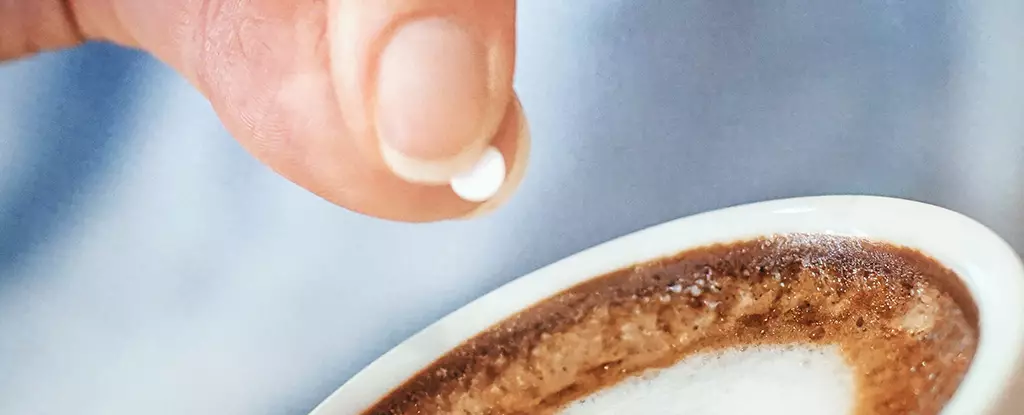In a groundbreaking study conducted by researchers at Brunel University, the potential of saccharin—commonly known as an artificial sweetener—has emerged as an unexpected solution in the war against antibiotic resistance. This research shines a light not only on the complexities of gut bacteria and their interactions with sweeteners but also on saccharin’s novel antimicrobial properties that could revolutionize our approach to treating drug-resistant infections.
In recent years, the alarming rise of antibiotic-resistant bacteria has been a neglected subject in healthcare discussions, and for good reason. The figures are startling: millions of deaths annually are attributed to infections caused by bacteria that have evolved to outsmart our most potent drugs. As the scientific community scrambles for new methods to combat this escalating crisis, this new research could be a turning point, suggesting the repurposing of compounds we already use in our daily lives. That saccharin, primarily recognized as a sugar alternative, can morph into a potential microorganism obliterator is incredible.
The Science of Saccharin: A Deeper Dive
At the core of the research lies a detailed investigation into how saccharin interacts with various strains of bacteria, including notorious pathogens like Staphylococcus aureus and Escherichia coli. The results, as outlined by microbiologist Ronan McCarthy, reveal that saccharin disrupts the structure of bacterial cells significantly. This disruption can result in the collapse of bacterial defenses, thereby enabling traditional antibiotics to penetrate and erode the very core of these drug-resistant organisms.
What makes these findings particularly attractive is that saccharin is already widely used. Unlike the typical process of developing new antibiotics—which can cost billions and take decades—saccharin presents a more immediate and cost-effective weapon in our therapeutic arsenal. This revelation underscores the notion that effective solutions can sometimes be found in the most conventional of substances, reshaping our understanding of their applications.
Innovative Applications: From Sweetener to Surgical Dressing
Moreover, the potential applications of saccharin extend beyond its bactericidal properties. Researchers have experimented with it in creating advanced surgical dressings, which have shown greater efficacy than traditional materials. This breakthrough could change the landscape of wound management, offering better protection and healing in clinical settings. The revelation that saccharin can outperform silver, a longstanding staple in wound care, speaks volumes about the untapped potential of this sweetener to address critical healthcare challenges.
The task ahead for researchers is to refine these applications and verify saccharin’s effectiveness across various types of infections and conditions. The implications for surgical procedures—where the prevention of infection is paramount—could be transformative. As healthcare systems grapple with the repercussions of antibiotic resistance, the push to innovate solutions that safeguard patient welfare has never been more urgent.
The Complexity of Artificial Sweeteners
However, a note of caution must temper the excitement surrounding saccharin. While the health effects of artificial sweeteners have been debated for years, their impact on human health and gut microbiomes remains complex and not fully understood. Saccharin, even as it promises benefits in combating bacterial infections, could inadvertently provoke other health issues. Researchers must tread carefully, ensuring that any therapeutic benefits do not come at the cost of adverse health effects. Comprehensive studies are necessary to grasp the multifaceted implications of introducing saccharin into medical treatment regimens.
Addressing a Global Crisis
The urgency of the antibiotic resistance crisis cannot be overstated. As McCarthy highlights, the specter of infections resistant to existing treatments looms large over medical procedures ranging from dental work to cancer therapies. The research community is in dire need of innovative strategies that can provide efficacious responses to these resistant strains.
In this race against time, saccharin’s promise stands out as a glimmer of hope. As we explore the boundaries of its applications and effects, the possibility of finding an existing chemical compound that might effectively combat some of our most tenacious foes is not just thrilling—it’s imperative. While skepticism and vigilance will remain crucial, the revelations from Brunel University might just be the catalyst we need to forge new paths in antibiotic treatment and ultimately safeguard public health for years to come.

